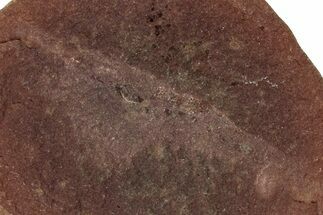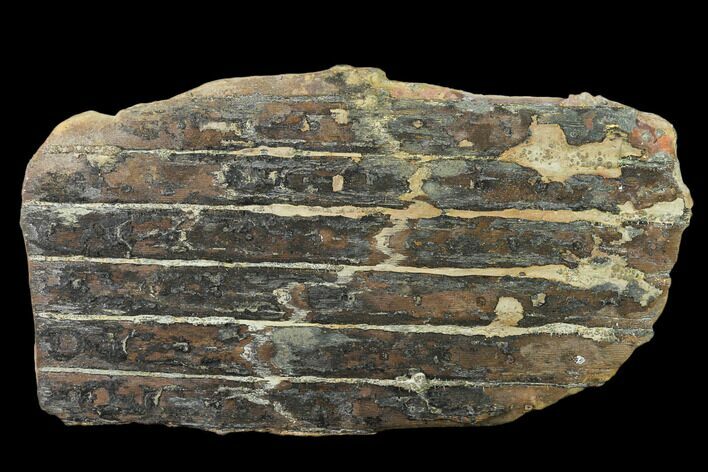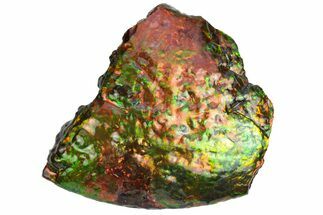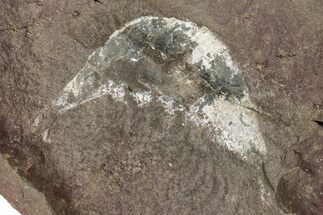This Specimen has been sold.
5.7" Sigillaria (Syringodendron) Trunk Section in Ironstone - Illinois
This is a 5.7" fossil Sigillaria (Syringodendron sp.) trunk section from the Carbondale Formation near Coal City, Illinois. It is preserved within an ironstone nodule. It comes with an acrylic display stand.
Sigillaria was a tree-like plant reaching a height up to 30 meters (100 feet) with a tall single or occasionally forked trunk that lacked wood. Support came from a layer of closely packed leaf bases just below the surface of the trunk, while the center was filled with pith. The long, thin, grasslike leaves were attached directly to the stem and grew in a spiral along the trunk. The old leaf bases expanded as the trunk grew in width, and left a diamond-shaped pattern, which is evident in fossils. These leaf scars were arranged in vertical rows. The trunk had photosynthetic tissue on the surface, meaning that it was probably green.
Sigillaria, like many ancient lycopods, had a relatively short life cycle - growing rapidly and reaching maturity in a few years. Some researchers have suggested that Sigillaria was monocarpic, meaning that it died after reproduction, though this is not proven. It was associated with Lepidodendron, the scale tree, in the Carboniferous coal swamps.
Sigillaria was a tree-like plant reaching a height up to 30 meters (100 feet) with a tall single or occasionally forked trunk that lacked wood. Support came from a layer of closely packed leaf bases just below the surface of the trunk, while the center was filled with pith. The long, thin, grasslike leaves were attached directly to the stem and grew in a spiral along the trunk. The old leaf bases expanded as the trunk grew in width, and left a diamond-shaped pattern, which is evident in fossils. These leaf scars were arranged in vertical rows. The trunk had photosynthetic tissue on the surface, meaning that it was probably green.
Sigillaria, like many ancient lycopods, had a relatively short life cycle - growing rapidly and reaching maturity in a few years. Some researchers have suggested that Sigillaria was monocarpic, meaning that it died after reproduction, though this is not proven. It was associated with Lepidodendron, the scale tree, in the Carboniferous coal swamps.
SPECIES
Syringodendron sp.
LOCATION
Coal City, Illinois
FORMATION
Carbondale Formation
SIZE
5.7 x 3.2" nodule
CATEGORY
SUB CATEGORY
ITEM
#136649
We guarantee the authenticity of all of our specimens.
 Reviews
Reviews











